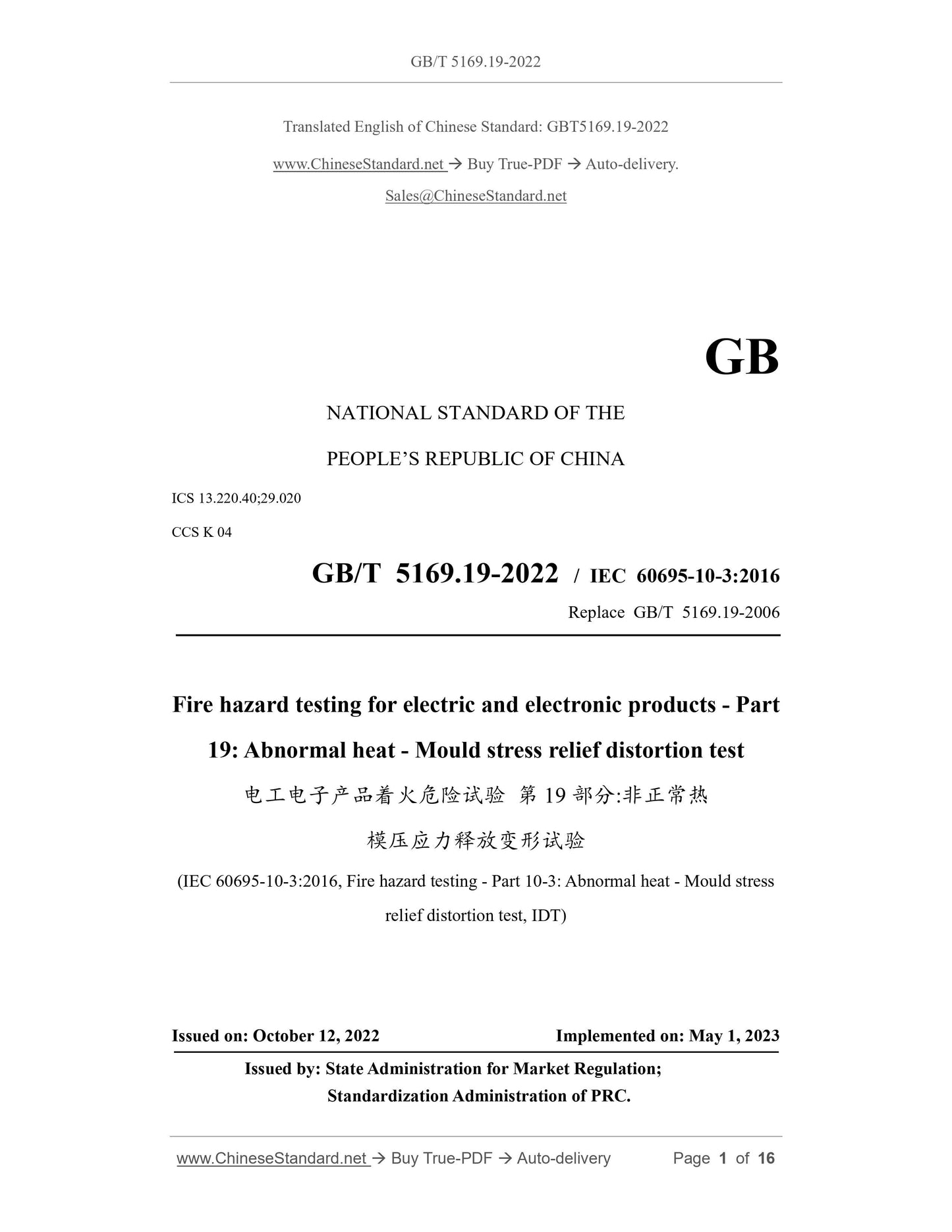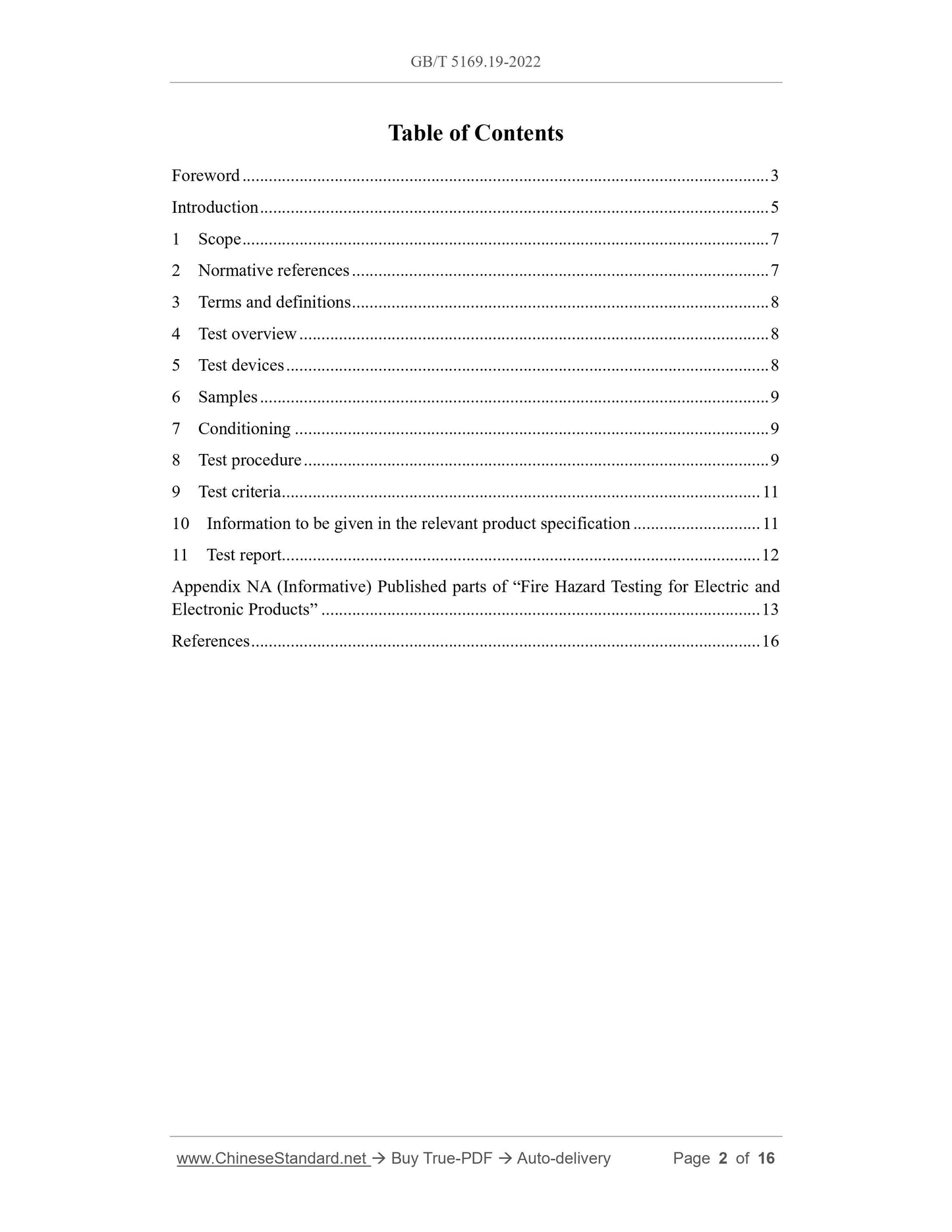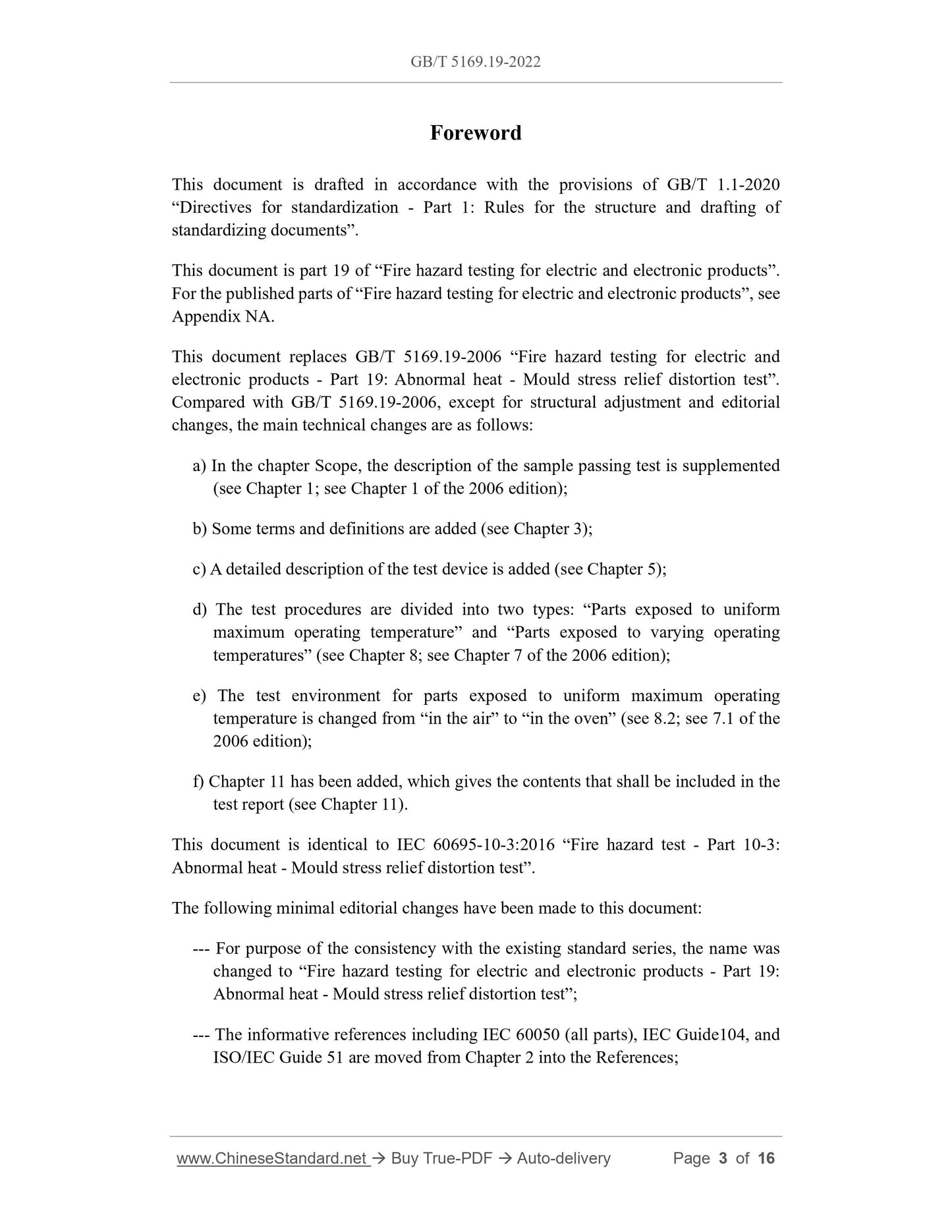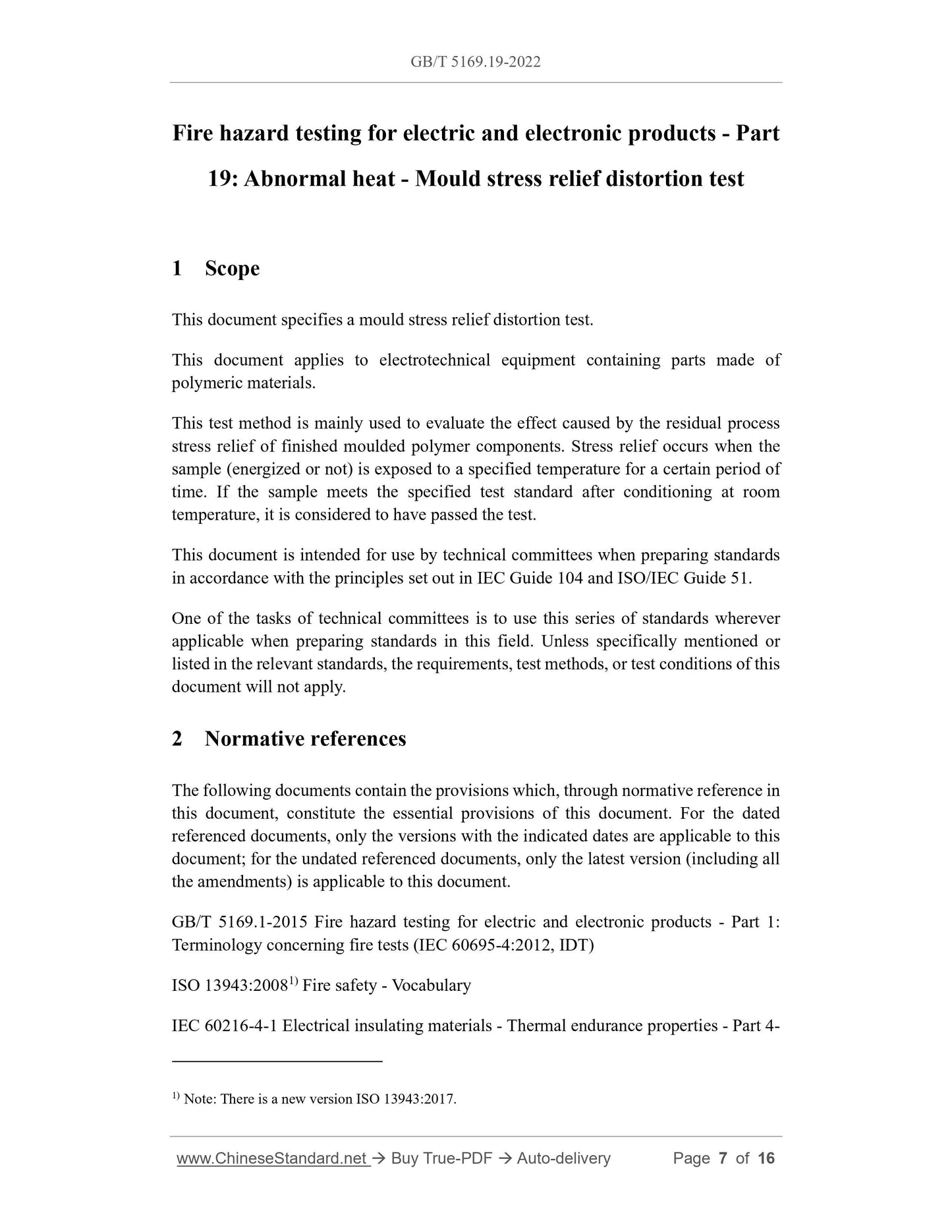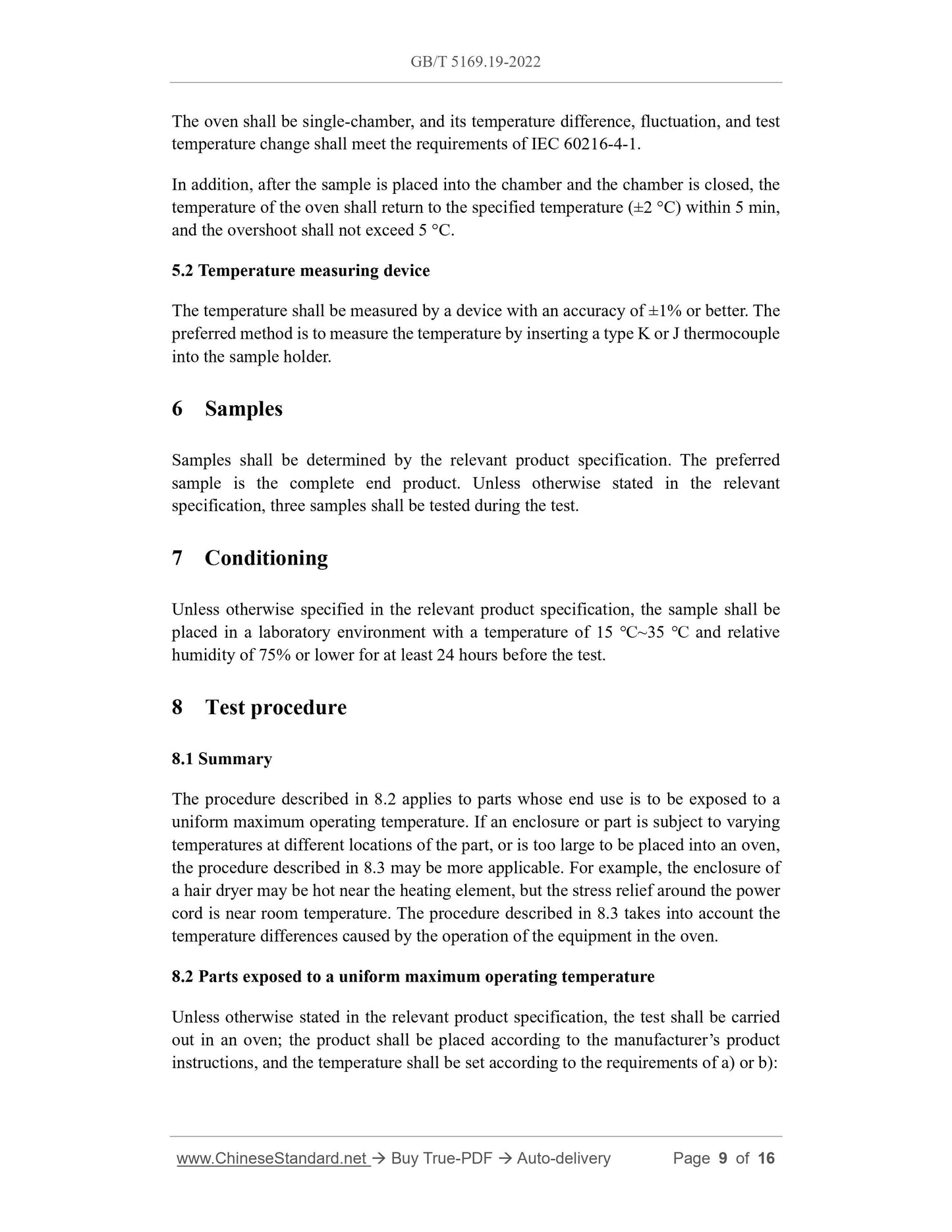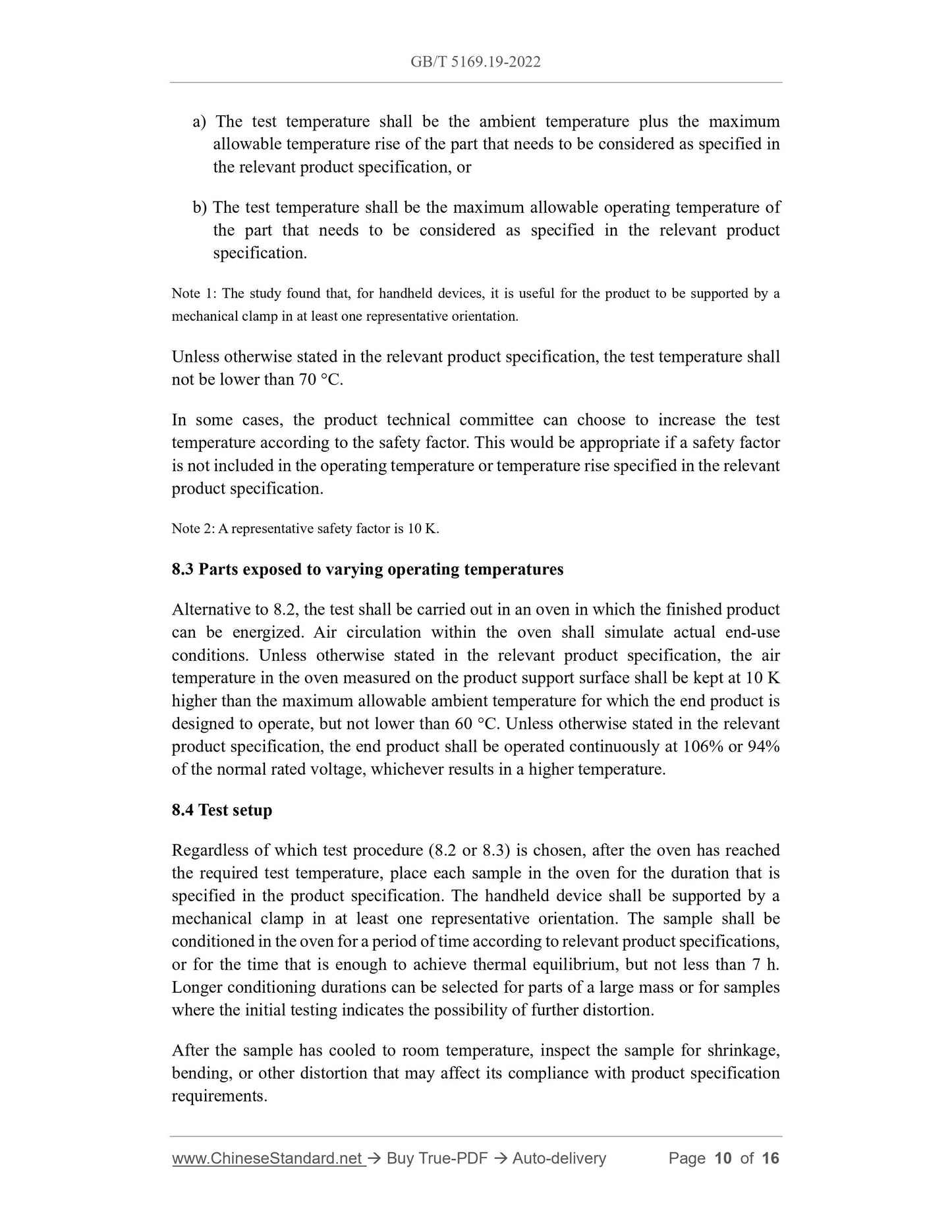1
/
of
6
www.ChineseStandard.us -- Field Test Asia Pte. Ltd.
GB/T 5169.19-2022 English PDF (GB/T5169.19-2022)
GB/T 5169.19-2022 English PDF (GB/T5169.19-2022)
Regular price
$165.00
Regular price
Sale price
$165.00
Unit price
/
per
Shipping calculated at checkout.
Couldn't load pickup availability
GB/T 5169.19-2022: Fire hazard testing for electric and electronic products - Part 19: Abnormal heat - Mould stress relief distortion test
Delivery: 9 seconds. Download (and Email) true-PDF + Invoice.Get Quotation: Click GB/T 5169.19-2022 (Self-service in 1-minute)
Newer / historical versions: GB/T 5169.19-2022
Preview True-PDF
Scope
This document specifies a mould stress relief distortion test.This document applies to electrotechnical equipment containing parts made of
polymeric materials.
This test method is mainly used to evaluate the effect caused by the residual process
stress relief of finished moulded polymer components. Stress relief occurs when the
sample (energized or not) is exposed to a specified temperature for a certain period of
time. If the sample meets the specified test standard after conditioning at room
temperature, it is considered to have passed the test.
This document is intended for use by technical committees when preparing standards
in accordance with the principles set out in IEC Guide 104 and ISO/IEC Guide 51.
One of the tasks of technical committees is to use this series of standards wherever
applicable when preparing standards in this field. Unless specifically mentioned or
listed in the relevant standards, the requirements, test methods, or test conditions of this
document will not apply.
Basic Data
| Standard ID | GB/T 5169.19-2022 (GB/T5169.19-2022) |
| Description (Translated English) | Fire hazard testing for electric and electronic products - Part 19: Abnormal heat - Mould stress relief distortion test |
| Sector / Industry | National Standard (Recommended) |
| Classification of Chinese Standard | K04 |
| Classification of International Standard | 13.220.40; 29.020 |
| Word Count Estimation | 10,164 |
| Date of Issue | 2022-10-14 |
| Date of Implementation | 2023-05-01 |
| Older Standard (superseded by this standard) | GB/T 5169.19-2006 |
| Issuing agency(ies) | State Administration for Market Regulation, China National Standardization Administration |
Share
